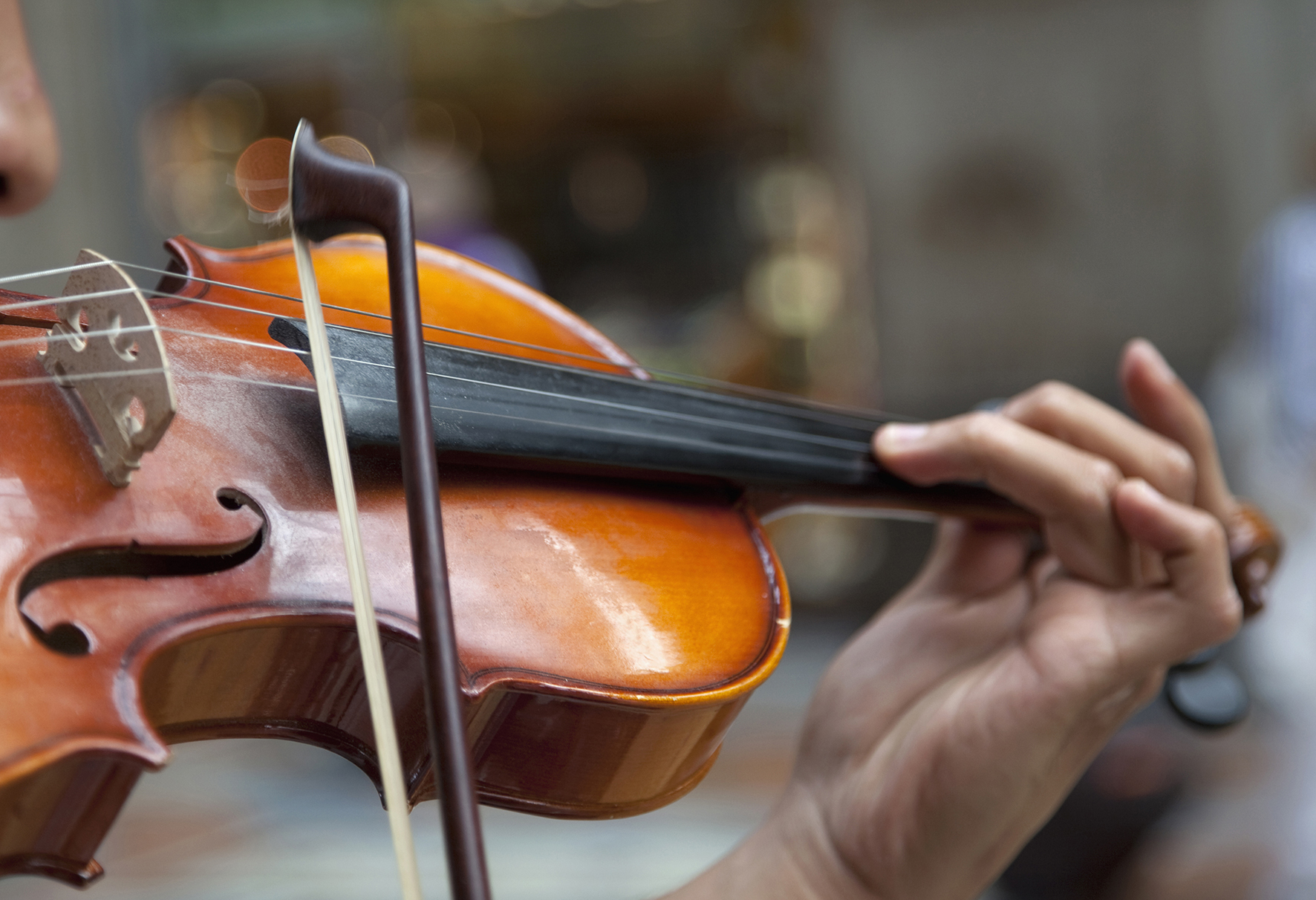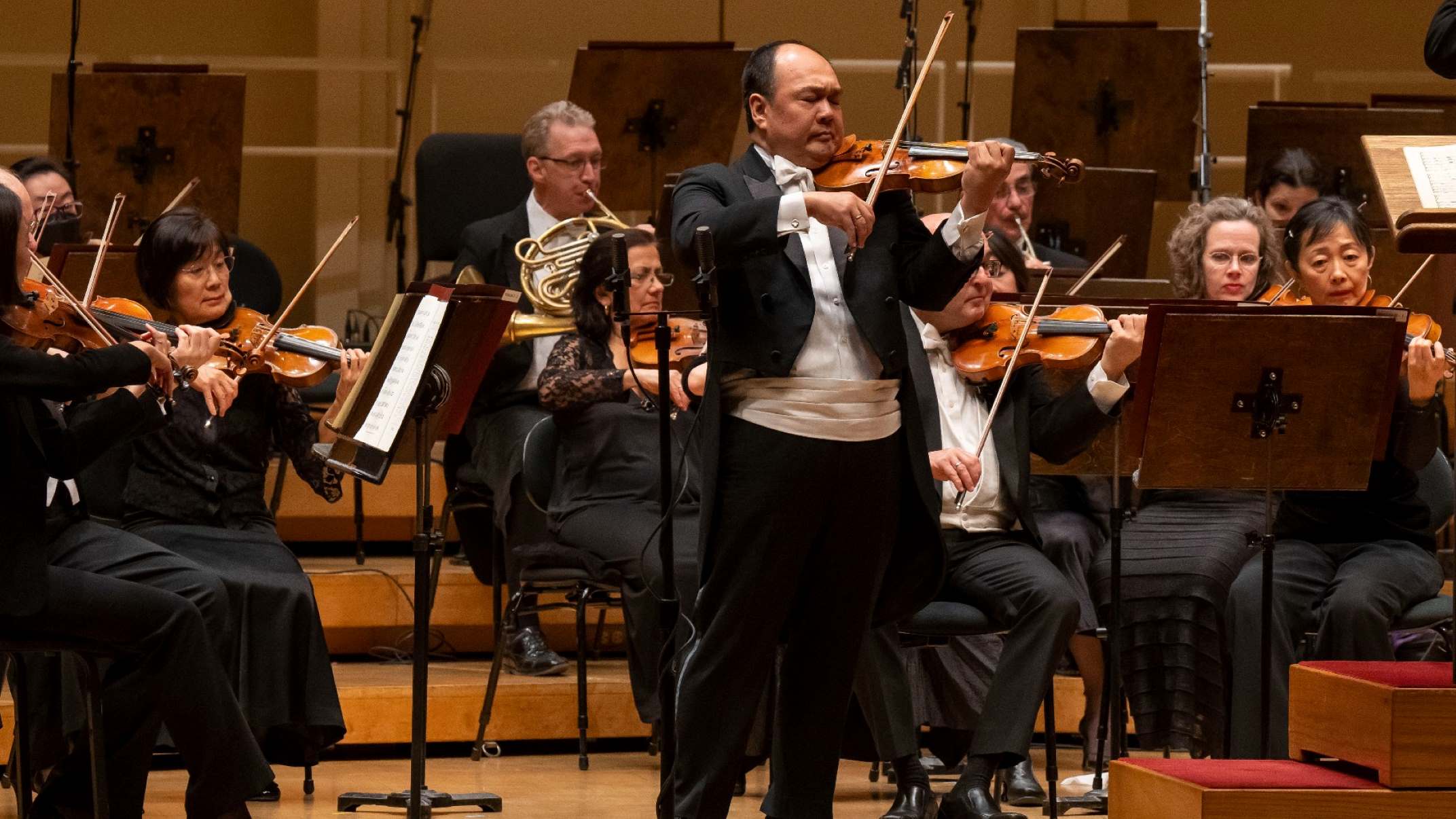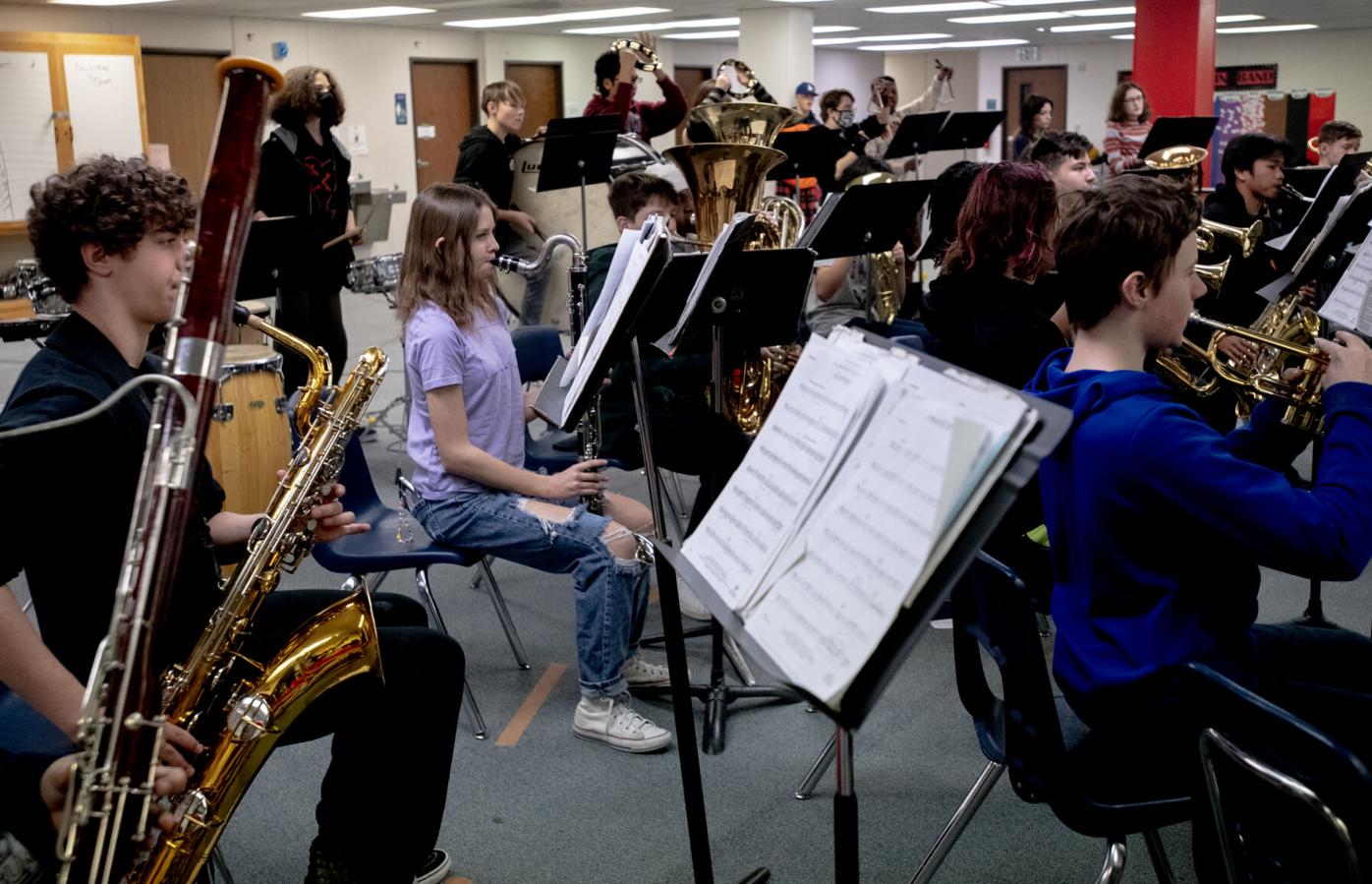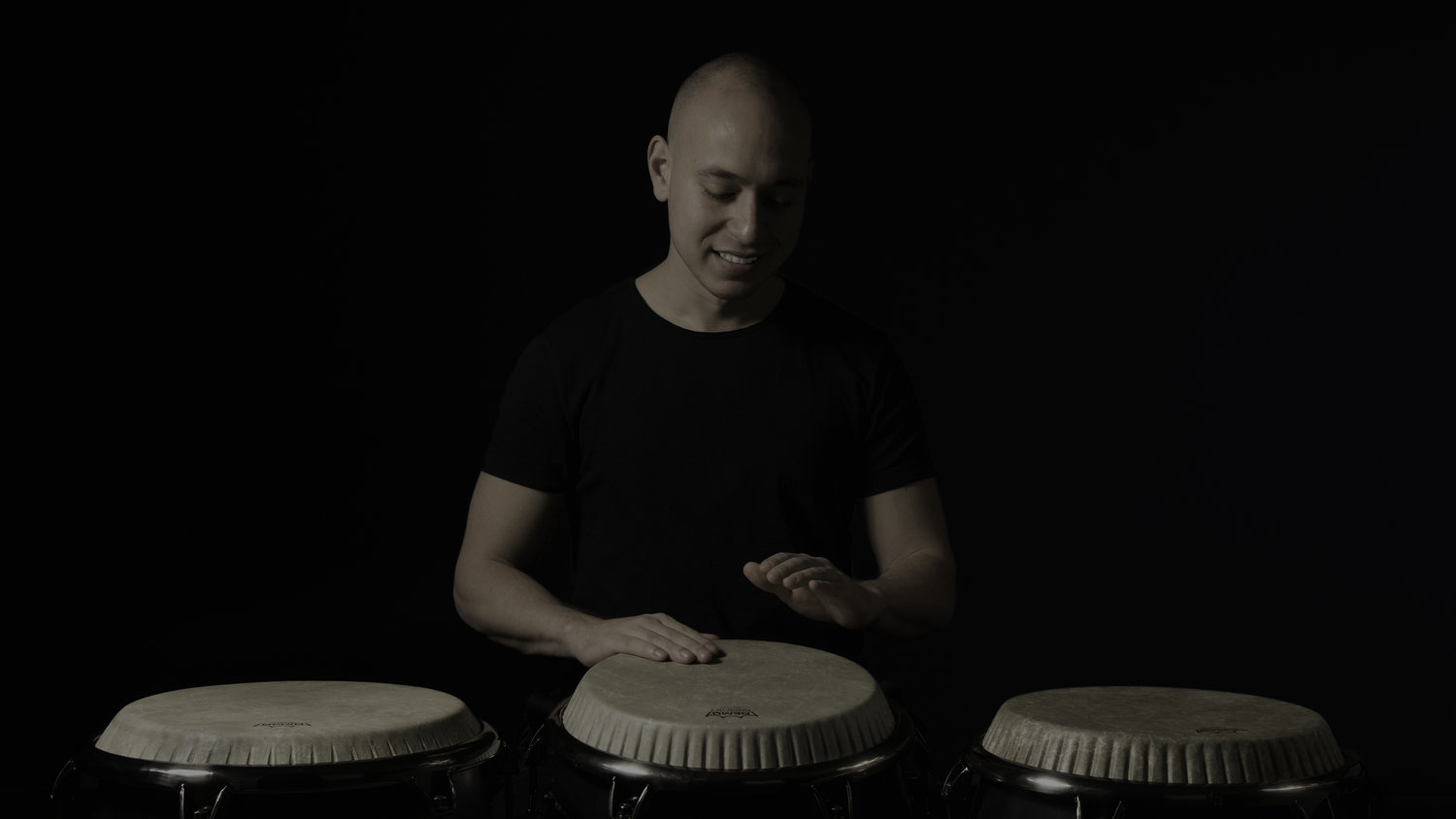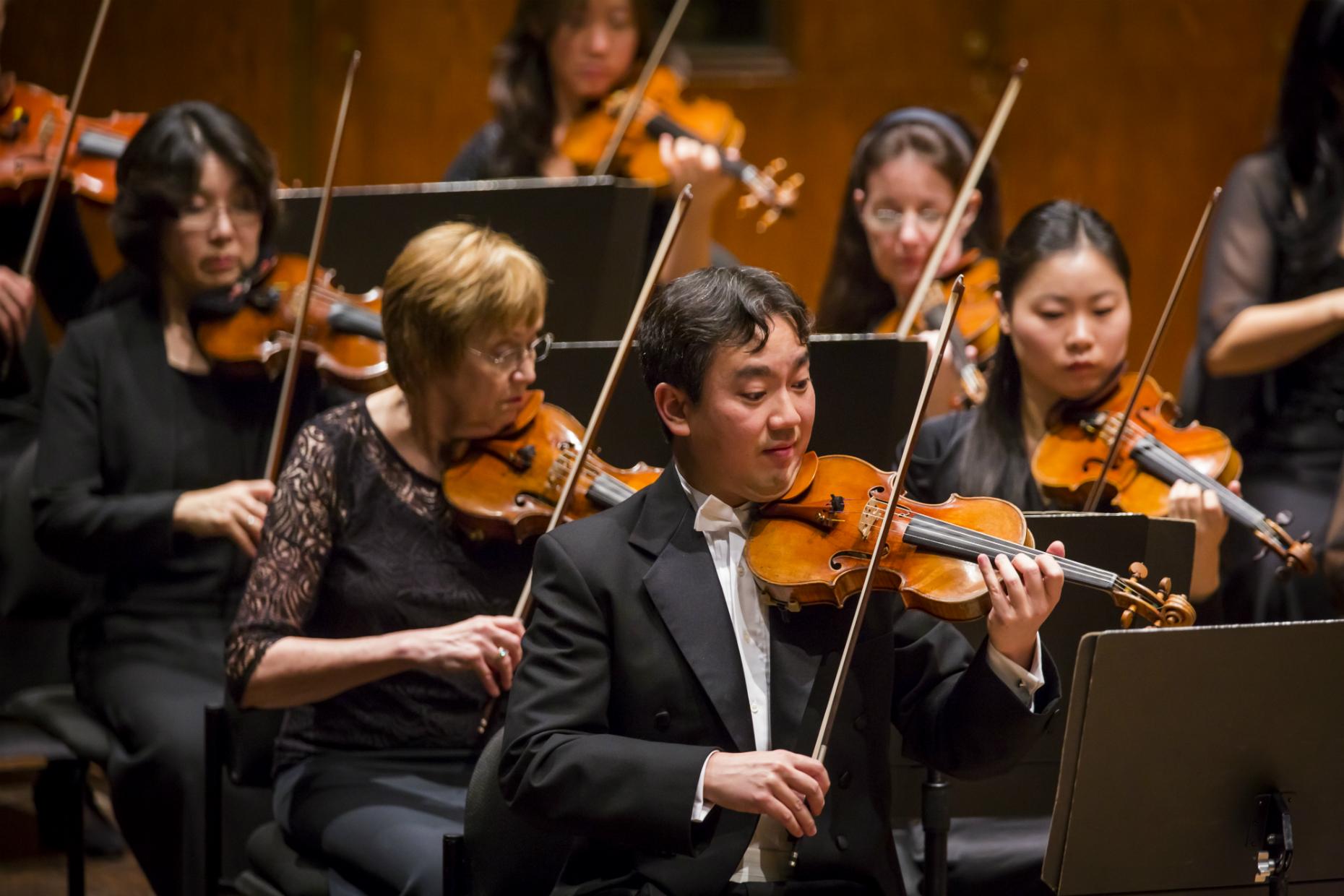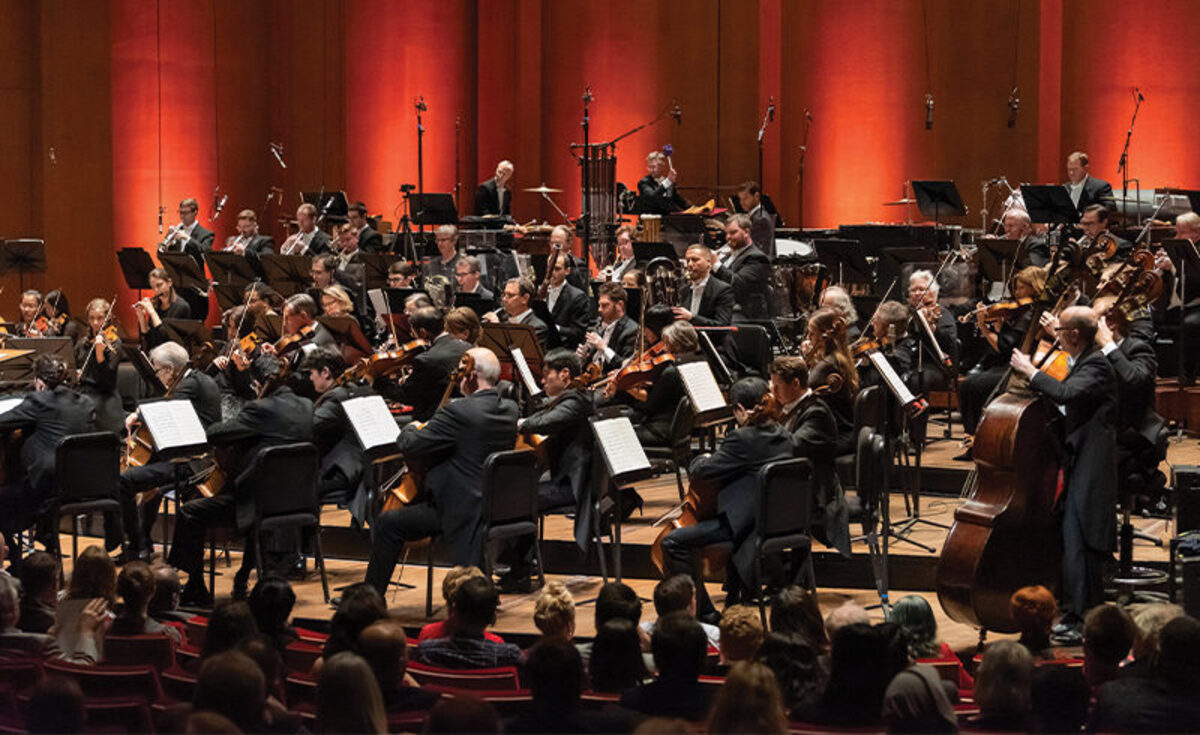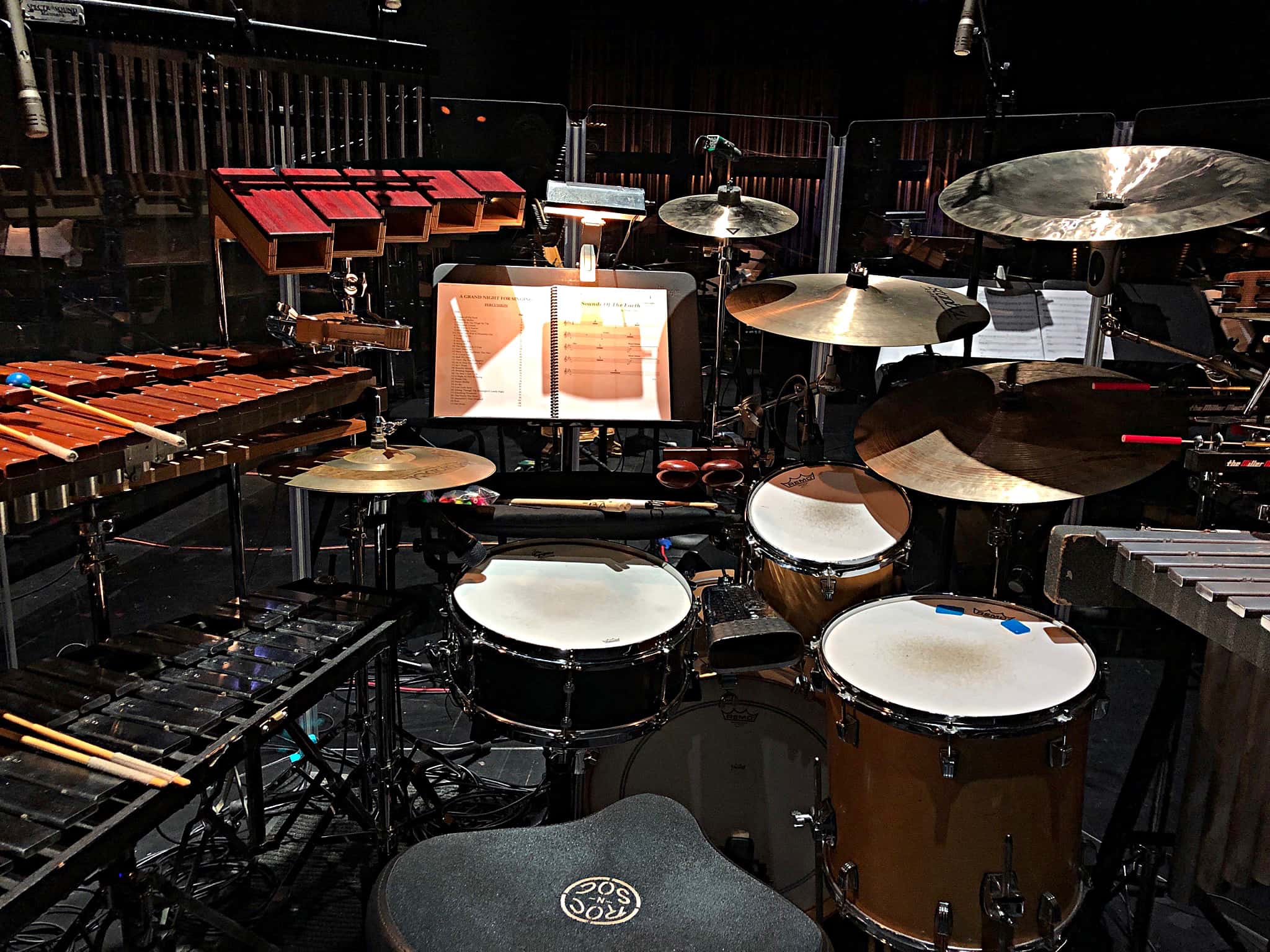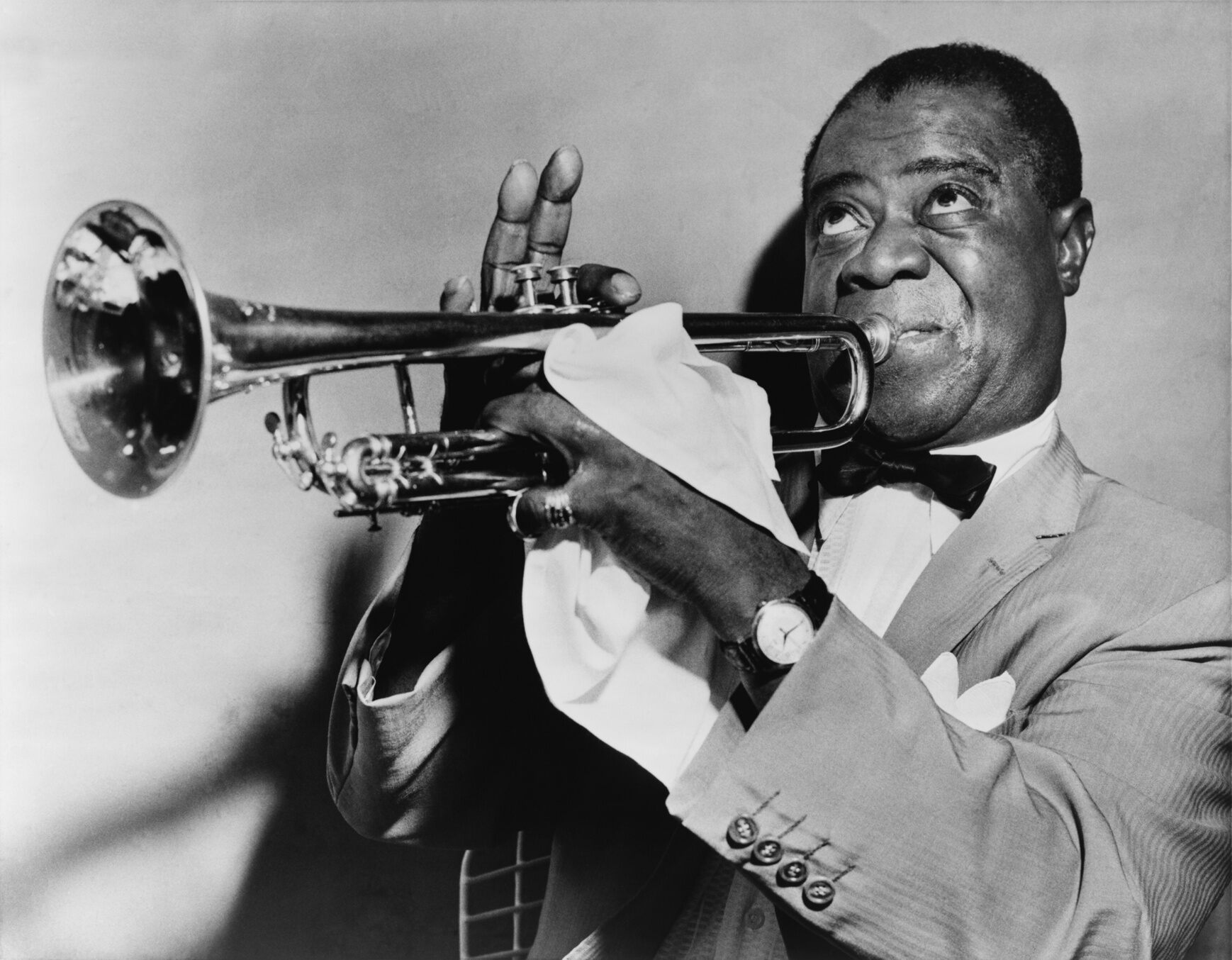Home>Production & Technology>Orchestra>What Instruments Were Added To The Romantic Orchestra
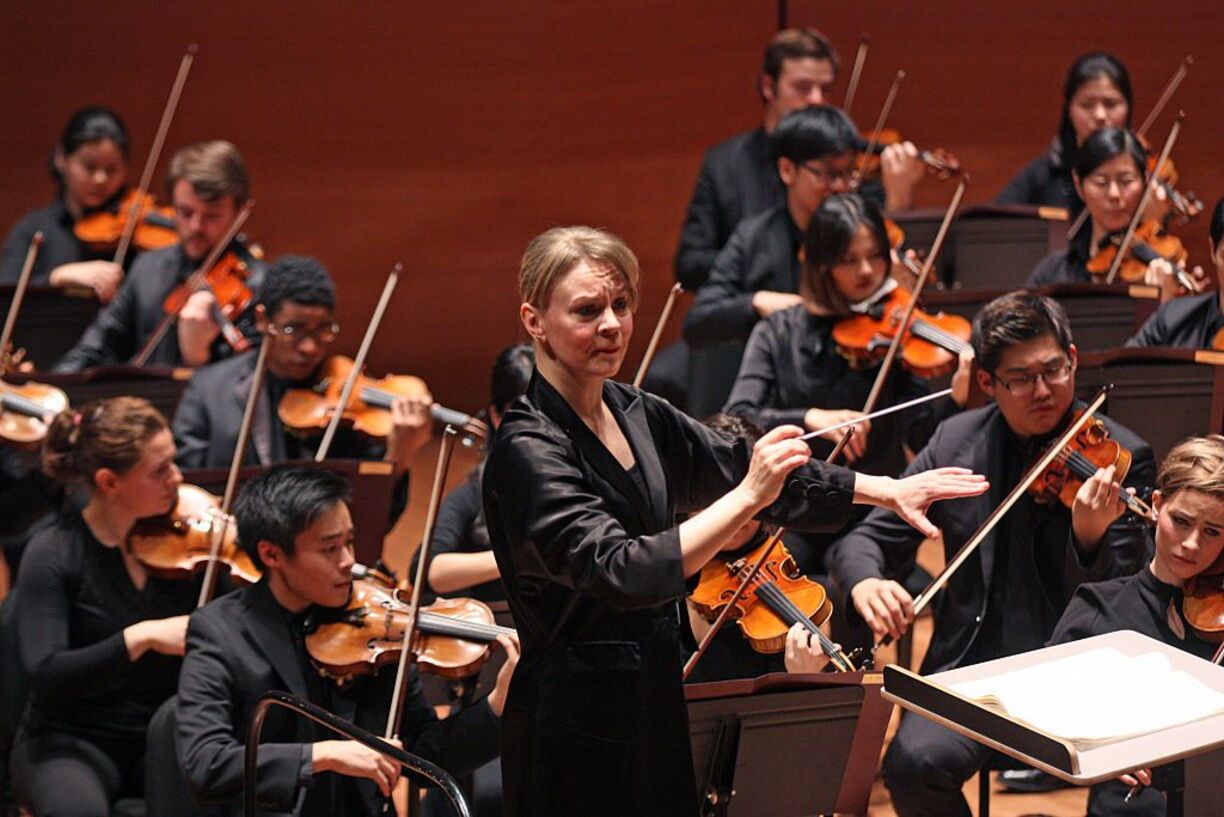

Orchestra
What Instruments Were Added To The Romantic Orchestra
Published: February 24, 2024
Discover the diverse instruments added to the Romantic orchestra and their impact on the evolution of orchestral music. Explore the rich history and development of the orchestra.
(Many of the links in this article redirect to a specific reviewed product. Your purchase of these products through affiliate links helps to generate commission for AudioLover.com, at no extra cost. Learn more)
Table of Contents
Introduction
In the 19th century, the Romantic era brought about a significant expansion and transformation of the orchestra. Composers sought to evoke intense emotions, vivid imagery, and dramatic storytelling through their music, leading to the enlargement of the orchestra and the addition of new instruments. This period witnessed a departure from the classical restraint and formality, embracing a more expressive and passionate musical language.
The expansion of the orchestra during the Romantic era was a response to the growing demand for larger and more diverse ensembles capable of conveying the heightened emotional and narrative content found in the music of the time. Composers such as Ludwig van Beethoven, Franz Schubert, and Pyotr Ilyich Tchaikovsky, among others, pushed the boundaries of orchestration, inspiring the inclusion of new instruments to enrich the sonic palette and expand the expressive possibilities of the orchestra.
The evolution of the Romantic orchestra not only broadened the range of sounds and textures available to composers but also provided instrumentalists with new opportunities for artistic expression. As the orchestra grew in size and diversity, it became a platform for innovation and experimentation, reflecting the evolving musical aesthetics and the desire to create immersive and evocative musical experiences for audiences.
The addition of new instruments to the orchestra during the Romantic era marked a pivotal moment in the history of Western classical music, shaping the sonic landscape and influencing the development of orchestral composition and performance practices. This era witnessed a profound reimagining of the orchestra as a dynamic and versatile ensemble capable of capturing the full spectrum of human emotions and experiences through the power of music.
The subsequent sections will delve into the specific instruments that were added to the Romantic orchestra, shedding light on their unique contributions to the rich tapestry of orchestral music during this transformative period.
String Instruments
During the Romantic era, the string section of the orchestra underwent significant expansion, both in terms of the number of players and the inclusion of new instruments. This expansion was driven by the desire to achieve greater tonal richness and expressive depth in orchestral compositions. The traditional string ensemble, consisting of violins, violas, cellos, and double basses, was augmented with additional instruments to enhance the sonic capabilities of the orchestra.
One of the most notable additions to the string section was the introduction of the harp as a standard orchestral instrument. The harp's ethereal and shimmering sound added a magical quality to Romantic orchestral compositions, allowing composers to evoke otherworldly atmospheres and enhance the emotional resonance of their music. Its inclusion expanded the harmonic and textural possibilities of the orchestra, enriching the overall sonic tapestry with its distinctive timbre.
Furthermore, the emergence of the symphonic poem, a genre popularized during the Romantic era, spurred the demand for a larger and more diverse string section. Composers such as Franz Liszt and Richard Strauss sought to depict vivid narratives and evoke evocative imagery through their orchestral works, leading to the expansion of the string ensemble to accommodate the expressive demands of this new form of musical storytelling.
The Romantic era also witnessed innovations in string instrument construction and playing techniques, enabling greater expressivity and virtuosity. String players explored new bowing techniques, dynamic contrasts, and extended techniques to convey a wide range of emotions and moods in orchestral compositions. The development of steel strings for string instruments further enhanced their projection and resonance, allowing for a more powerful and penetrating sound that could soar above the expanded orchestra.
Moreover, the increased prominence of the string section in Romantic orchestral music led to the exploration of rich harmonic textures and lush melodic lines, showcasing the expressive capabilities of the violin family and the contrabass. Composers capitalized on the versatility and emotional depth of the strings, crafting impassioned melodies, poignant solos, and sweeping orchestral tutti passages that captured the essence of Romanticism.
In essence, the expansion of the string section during the Romantic era elevated the role of string instruments in orchestral music, paving the way for new sonic possibilities and expressive dimensions. The addition of the harp, the amplification of the string ensemble, and the artistic innovations of string players collectively contributed to the lush and emotive sound world of the Romantic orchestra, leaving an indelible mark on the evolution of orchestral music.
This expansion of the string section during the Romantic era not only enriched the orchestral repertoire but also set the stage for future developments in orchestration and instrumental performance, shaping the trajectory of Western classical music in profound ways.
Woodwind Instruments
The Romantic era witnessed a remarkable evolution of the woodwind section within the orchestra, marked by the inclusion of new instruments and the exploration of their expressive potential. Composers of this era sought to harness the emotive and evocative qualities of woodwind instruments to enrich their orchestral compositions, leading to a significant expansion and diversification of the woodwind ensemble.
One of the most notable additions to the woodwind section during the Romantic era was the incorporation of the piccolo, a high-pitched transverse flute that added brilliance and agility to the orchestral palette. Its piercing and crystalline timbre allowed composers to introduce sparkling melodic lines and ethereal flourishes, enhancing the orchestral texture with its shimmering presence. The piccolo's inclusion expanded the tonal range and expressive capabilities of the woodwind section, enabling composers to achieve greater contrast and coloristic variety in their compositions.
Furthermore, the oboe d'amore, a mellow and expressive member of the oboe family, found its place in the Romantic orchestra, offering a warm and velvety timbre that complemented the traditional oboe's penetrating sound. Its rich and lyrical character made it well-suited for conveying poignant melodies and lyrical passages, adding a distinctive hue to the woodwind ensemble. Composers embraced the oboe d'amore's unique tonal qualities, integrating it into their orchestral works to evoke introspective moods and tender emotions.
The bass clarinet emerged as another significant addition to the woodwind section during the Romantic era, contributing depth and sonorous resonance to the orchestra's lower register. Its dark and expressive timbre provided composers with a powerful tool for crafting brooding and melancholic passages, enriching the orchestral timbre with its haunting presence. The bass clarinet's inclusion expanded the tonal palette of the woodwind section, enabling composers to explore a wider range of emotional and textural possibilities in their orchestral compositions.
Moreover, the Romantic era witnessed the elevation of the woodwind section to a prominent role in orchestral music, with composers harnessing the expressive capabilities of woodwind instruments to convey a diverse array of emotions and atmospheres. From tender lyrical passages to virtuosic displays of agility and brilliance, woodwind players became integral to the evocative storytelling and emotional depth of Romantic orchestral works.
In essence, the expansion of the woodwind section during the Romantic era not only enriched the orchestral repertoire but also paved the way for new sonic dimensions and expressive possibilities. The addition of the piccolo, oboe d'amore, bass clarinet, and the artistic innovations of woodwind players collectively contributed to the vibrant and diverse sound world of the Romantic orchestra, leaving an indelible mark on the evolution of orchestral music.
This expansion of the woodwind section during the Romantic era set the stage for future developments in orchestration and instrumental performance, shaping the trajectory of Western classical music in profound ways.
Brass Instruments
The Romantic era heralded a significant transformation in the brass section of the orchestra, characterized by the addition of new instruments and the exploration of their expressive potential. Composers of this era sought to harness the powerful and majestic qualities of brass instruments to enrich their orchestral compositions, leading to a substantial expansion and diversification of the brass ensemble.
One of the most prominent additions to the brass section during the Romantic era was the inclusion of the tuba, a large and resonant instrument that added depth and grandeur to the orchestral sound. Its commanding presence and sonorous timbre endowed orchestral compositions with a robust foundation, reinforcing the harmonic and textural fabric of the ensemble. The tuba's inclusion expanded the tonal range and expressive capabilities of the brass section, enabling composers to achieve greater richness and gravitas in their musical works.
Furthermore, the Romantic era witnessed the emergence of the Wagner tuba, a brass instrument specifically designed by composer Richard Wagner to fulfill the tonal requirements of his operatic and orchestral compositions. The Wagner tuba's distinct timbre and evocative resonance contributed to the orchestral palette, offering composers a unique sonic color that could evoke heroic narratives and dramatic landscapes. Its integration into the brass section added a new dimension of tonal richness and expressive power to orchestral music, reflecting the evolving aesthetic sensibilities of the Romantic era.
The addition of the bass trombone also left a profound impact on the brass section, enhancing the ensemble's low register with its deep and sonorous sound. Its commanding presence and expressive capabilities made it an indispensable asset in conveying dramatic and monumental passages, adding weight and intensity to the orchestral texture. Composers capitalized on the bass trombone's commanding timbre, integrating it into their compositions to evoke grandeur and solemnity, further expanding the expressive range of the brass section.
Moreover, the Romantic era witnessed the elevation of the brass section to a pivotal role in orchestral music, with composers harnessing the majestic and heroic qualities of brass instruments to convey a diverse array of emotions and dramatic narratives. From triumphant fanfares to poignant chorales, brass players became integral to the grandeur and emotional depth of Romantic orchestral works.
In essence, the expansion of the brass section during the Romantic era not only enriched the orchestral repertoire but also paved the way for new sonic dimensions and expressive possibilities. The addition of the tuba, Wagner tuba, bass trombone, and the artistic innovations of brass players collectively contributed to the majestic and resplendent sound world of the Romantic orchestra, leaving an indelible mark on the evolution of orchestral music.
This expansion of the brass section during the Romantic era set the stage for future developments in orchestration and instrumental performance, shaping the trajectory of Western classical music in profound ways.
Percussion Instruments
The Romantic era witnessed a remarkable expansion and diversification of the percussion section within the orchestra, marking a significant departure from the traditional role of percussion instruments. Composers of this era sought to harness the evocative and dramatic qualities of percussion to enrich their orchestral compositions, leading to the inclusion of new instruments and the exploration of their expressive potential.
One of the most notable additions to the percussion section during the Romantic era was the incorporation of the timpani, also known as kettle drums, as an essential component of the orchestral ensemble. The timpani's resonant and majestic sound added depth and rhythmic vitality to orchestral compositions, providing a solid foundation for the ensemble's harmonic and rhythmic structure. Its inclusion expanded the rhythmic range and expressive capabilities of the percussion section, enabling composers to achieve greater dramatic impact and dynamic contrast in their musical works.
Furthermore, the introduction of a variety of auxiliary percussion instruments, such as cymbals, triangle, tambourine, and bass drum, enriched the sonic palette of the orchestra, offering composers a diverse array of colors and textures to evoke a wide range of emotions and atmospheres. These instruments provided opportunities for dramatic accents, shimmering effects, and rhythmic propulsion, enhancing the overall sonic tapestry with their distinctive timbres and expressive capabilities.
The Romantic era also witnessed the elevation of the percussion section to a prominent role in orchestral music, with composers harnessing the dynamic and evocative qualities of percussion instruments to convey a diverse array of emotions and dramatic narratives. From thunderous climaxes to delicate shimmering passages, percussionists became integral to the rhythmic drive and emotional depth of Romantic orchestral works.
Moreover, the innovative use of percussion instruments in the orchestral repertoire during the Romantic era paved the way for new sonic dimensions and expressive possibilities. The addition of the timpani, auxiliary percussion instruments, and the artistic innovations of percussionists collectively contributed to the dynamic and diverse sound world of the Romantic orchestra, leaving an indelible mark on the evolution of orchestral music.
This expansion of the percussion section during the Romantic era not only enriched the orchestral repertoire but also set the stage for future developments in orchestration and instrumental performance, shaping the trajectory of Western classical music in profound ways.
Conclusion
In conclusion, the Romantic era brought about a profound transformation of the orchestra, marked by the expansion and diversification of instrumental resources. The addition of new instruments to the string, woodwind, brass, and percussion sections not only broadened the sonic palette of the orchestra but also enriched the expressive capabilities of orchestral compositions. Composers of this era, driven by a desire to evoke intense emotions and vivid imagery, embraced the expanded orchestral resources to create music that resonated with passion and drama.
The expansion of the string section, including the incorporation of the harp and advancements in string instrument construction and playing techniques, elevated the expressive potential of string instruments within the orchestra. This expansion facilitated the exploration of rich harmonic textures and lush melodic lines, contributing to the lush and emotive sound world of the Romantic orchestra.
Similarly, the addition of the piccolo, oboe d'amore, bass clarinet, and the elevation of woodwind instruments to prominent roles, allowed for the conveyance of a diverse array of emotions and atmospheres, enriching the orchestral palette with their distinctive timbres and expressive capabilities.
The inclusion of the tuba, Wagner tuba, bass trombone, and the elevation of the brass section to pivotal roles, enabled composers to harness the majestic and heroic qualities of brass instruments, contributing to the majestic and resplendent sound world of the Romantic orchestra.
Moreover, the incorporation of the timpani and auxiliary percussion instruments, as well as the innovative use of percussion instruments, paved the way for new sonic dimensions and expressive possibilities, enhancing the rhythmic drive and emotional depth of Romantic orchestral works.
In essence, the expansion and diversification of the orchestra during the Romantic era not only enriched the orchestral repertoire but also set the stage for future developments in orchestration and instrumental performance, shaping the trajectory of Western classical music in profound ways. The evolving orchestral resources and their expressive potential reflected the spirit of Romanticism, capturing the full spectrum of human emotions and experiences through the power of music. As a result, the Romantic orchestra stands as a testament to the enduring legacy of innovation and artistic expression in the history of Western classical music.

